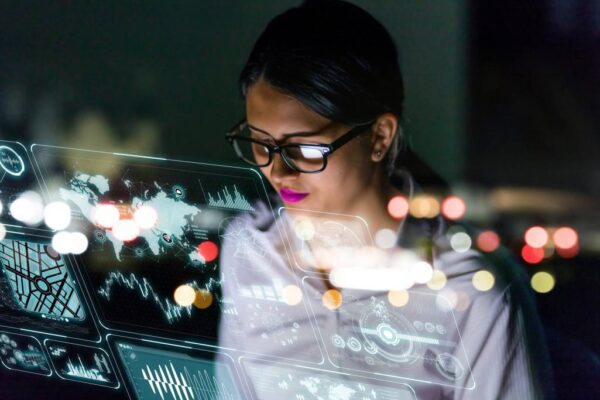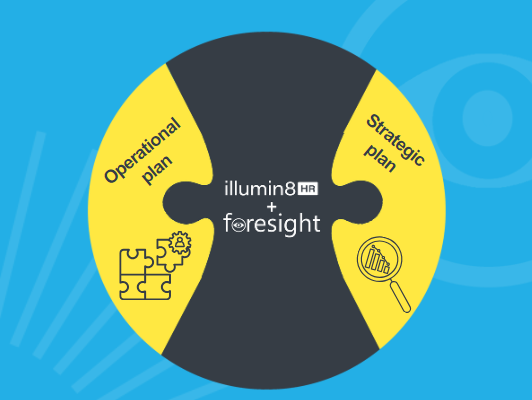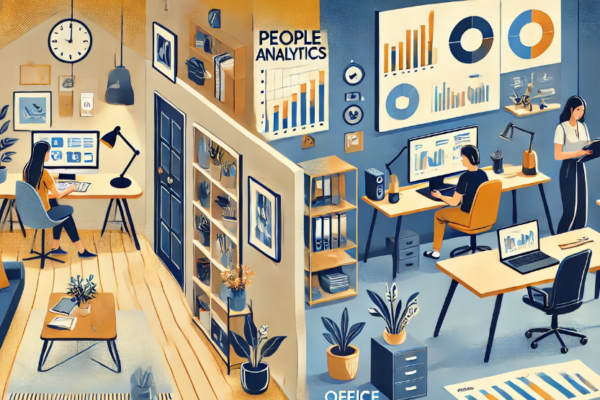Data holds the answers to many of our questions about people at work. Why do some functions have poor attrition rates? How do our graduate hires perform year on year? Crunching these data sets and spotting trends is time consuming. Enter machine learning, a form of Artificial Intelligence (AI), that can help us create efficiencies, see new perspectives and save us time. But, used poorly and without human input, the application of AI risks causing harm to an organisation’s HR practices.
Sentiment about AI, both in HR and more broadly, is more negative than positive. Although we take advantage of it in our daily lives (shopping recommendations, smart home technology, facial recognition on your smartphone), there remains a perception that AI does more harm than good.
Data scientist Cathy O’Neil’s message about ‘weapons of math destruction’ highlights how AI has been used to ‘automate the status quo’, sorting the winners from the losers, perpetuating bias and disadvantaging people from minority groups in terms of job opportunity, access to healthcare and housing. Closer to the domain of HR, Amazon’s AI-powered hiring algorithm was scrapped when the model was found to be biased towards males (because data used to determine what success looked like was from Amazon’s past hires who were in the majority, male).
It’s little wonder then that many of us have reservations about the ‘black box’ of algorithms. As this piece in Harvard Business Review points out, although “automating the collection and analysis of large datasets, AI and other analytics tools offer the promise of improving every phase of the HR pipeline”, we must acknowledge that AI models are more likely to perform best with regards to majority groups. That they cannot be truly race or gender blind, and that even carefully build models will not lead to equal outcomes for all.
Given these cautions, alongside the potential of AI to help us make more informed decisions, how can ensure that we’re using AI in a fair way?
Using AI to inform, not decide
At Activ8 we believe that using AI to flag trends which are then assessed, tested and prioritised by humans is the right approach. This allows our technology to do the job of crunching the data, and humans to add the broader context and relevance of that trend.
One of the issues that we often encounter with adoption of people analytics is that our users are busy people. Even for power users of our platform illumin8HR, analysis may not go beyond headlines such as ‘we have a retention problem in this business unit’.
With that in mind, a key challenge we’re working to solve for users is how we can make that analysis a less onerous task and bring it to the fore. Can we spot trends in the data? And can we go one step further and suggest correlations or find relationships?
For example, flagging those who are leaving the business unit with high attrition also do not have timely pay and performance reviews, and that their manager is underperforming. The AI might not have drawn a conclusion, but it is a useful input into further analysis by humans.
The Activ8 approach to AI in analytics
At Activ8, we use a three-phase model to help our clients use AI fairly and responsibly:
- Time series forecasting – this application of machine learning constantly reviews data already in the platform and projects forwards so that users can forecast annual or seasonal trends. This is presented to users in a dashboard so they can quickly and easily access forecasts.
- Influencers – this is AI analysing which measures tend to influence each metrics in within our people analytics platform. It’s asking the question ‘what are the correlations in our data’ and serving this up to users to review.
- Modelling – this application is using AI to work with the influencing factors. Using our early example, you might model what the likely effect on attrition would be if appraisals were held more often or pay rises awarded – and what the costs would be. Live scenario modelling allows users to easily create cost-benefit analyses.
At the heart of our application of AI is helping people to make changes for the better within their organisations.
The future of AI in people analytics
There’s understandably concern about algorithms being to make decisions that affect people’s livelihoods and lives, based on just a small scope of data, and without human empathy. Any organisation that uses AI to make decisions rather than informing them, will ultimately be less productive and less fair than one that feeds it into decision making that encompasses feedback from multiple sources.
Where does the future of AI in HR analytics lie? At Activ8 we believe that we will be able to save our users time and make analysis easy for people who do not have deep analytical skills. Our platform serves up digestible insights that are prioritised in order of significance. Further action planning lies with human input, our users who add context and empathy to one of HR’s useful tools that is AI in people analytics.
To learn more about Activ8’s illumin8HR solution, contact us to book a demo:





